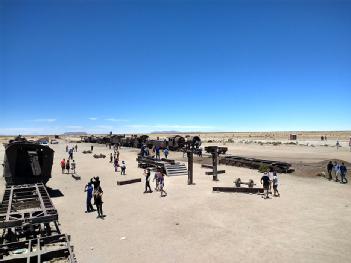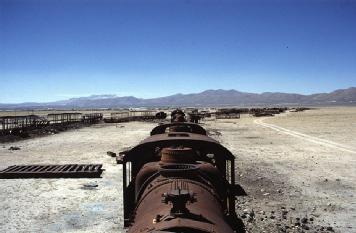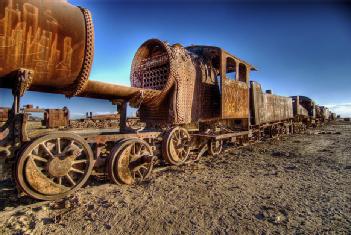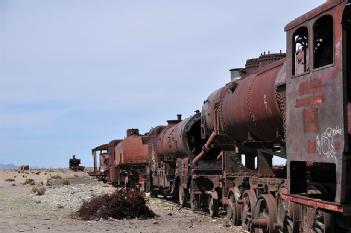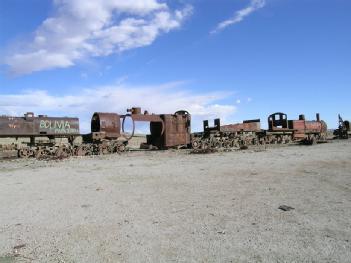
Cementerio de los Trenes - Cemetery of Trains - Eisenbahnfriedhof Uyuni |
Uyuni, Bolivia (Potosí) |
|
| Address |
|
| Floor area | unfortunately not known yet |
|
Opening times
|
at all times | ||||
|
Status from 12/2017
|
Free entry. | ||||
| Contact |
|
||||
| Homepage | |||||
| Location / Directions |
Uyuni s an important transport hub, being the location of a major railway junction. Four lines join here, respectively from La Paz (via Oruro), Calama (in Chile), Potosí, and Villazón (on the Argentine border, where the line now ends). Uyuni is connected by road to Oruro - La Paz, Sucre, Villazón (border with Argentina) and Ollagüe, Chile. The city is also served by the Joya Andina Airport The train cemetery is located 3 km outside Uyuni and is connected to it by the old train tracks. |
| Description | Train cemetery One of the major tourist attractions of the area is an antique train cemetery. The town served in the past as a distribution hub for the trains carrying minerals on their way to the Pacific Ocean ports. The train lines were built by British engineers who arrived near the end of the 19th century and formed a sizable community in Uyuni. The engineers were invited by British-sponsored Antofagasta and Bolivia Railway Companies, which is now Ferrocarril de Antofagasta a Bolivia. The rail construction started in 1888 and ended in 1892. It was encouraged by the then Bolivian President Aniceto Arce, who believed Bolivia would flourish with a good transport system, but it was also constantly sabotaged by the local indigenous people who saw it as an intrusion into their lives. The trains were mostly used by the mining companies. In the 1940s, the mining industry collapsed, partly due to the mineral depletion. Many trains were abandoned thereby producing the train cemetery. There are talks to build a museum out of the cemetery. |
[dsp_museum_detail.cfm]
| Data Compliance | More Information |
